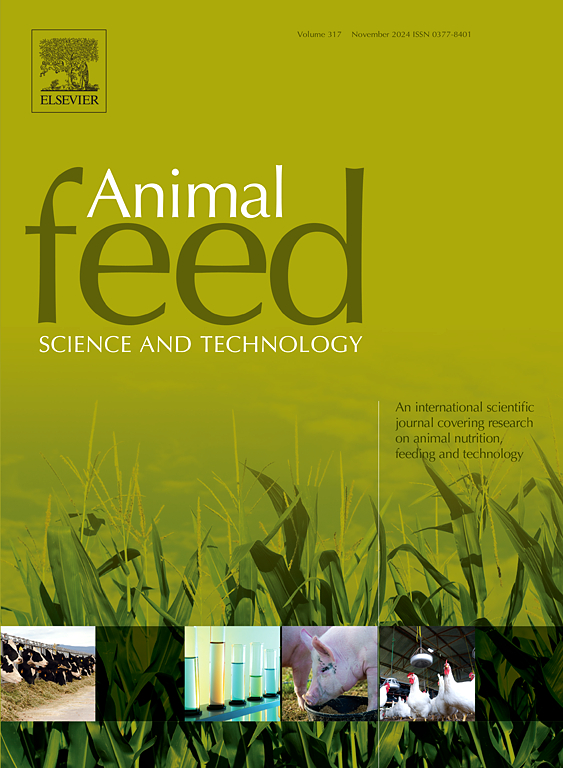Effect of dietary citrus pulp on performance and dry matter digestibility in dairy cows: A meta-analysis and meta-regression
IF 2.5
2区 农林科学
Q1 AGRICULTURE, DAIRY & ANIMAL SCIENCE
引用次数: 0
Abstract
Citrus by-products have been used as low-cost nutritional ingredient in ruminant diets to support growth and lactation. The current study aimed to evaluate the effect of dietary inclusion of citrus pulp on dairy cow performance through a meta-analysis approach. A systematic search was based on the PICO question (Participant-Intervention-Comparator-Outcomes): Compared to the control group, what is the effect of citrus pulp feeding on dairy cow performance? The bibliographic search was conducted by four experts using the scientific databases: PubMed, Google Scholar, Scopus and PRIMO-ExLibris. The outcome variables considered were dry matter intake (DMI), DM apparent total tract digestibility (ATTD), milk yield (MY), fat, protein, lactose content and yield, and ruminal propionic, butyric and acetic acids proportion. The effect size was measured through the raw and standardized mean difference (RMD and SMD respectively). The meta-analysis was conducted using the "Meta" package in R. The covariables included in the meta-regression were: genetic group, inclusion level of citrus pulp in the diet, dietary content and difference of CP, NDF and starch between citrus pulp and control diets, and milk production level. Dietary inclusion of citrus pulp in dairy cow rations had negative effect on DMI (-0.62 kg/d; P = 0.001), MY (-0.71 kg; P < 0.01), and protein (-0.08 g/100 g; P < 0.01) and lactose (-0.09 g/100 g; P < 0.01) concentrations with greater impact in high-producing cows, whereas DM ATTD was not affected by citrus pulp dietary inclusion. The volatile fatty acid proportion (mol/100 mol tVFA) increased for acetic (+0.64; P < 0.01) and butyric acids (+1.09; P < 0.01) but decreased for propionic acid (-1.18; P = 0.0001) in response to citrus pulp inclusion. Regarding meta-regression, inclusion level of citrus pulp was negatively associated with MY and DMI. The inclusion of citrus pulp in the diet of dairy cows has adverse effects on MY and some milk constituents such as lactose and protein, which are probably mediated by a decrease in DMI, dietary starch content and changes in the ruminal proportions of propionic and butyric VFAs. Finally, the decrease in DMI and milk yield is more marked in high yielding cows.
求助全文
约1分钟内获得全文
求助全文
来源期刊

Animal Feed Science and Technology
农林科学-奶制品与动物科学
CiteScore
6.00
自引率
6.20%
发文量
266
审稿时长
3 months
期刊介绍:
Animal Feed Science and Technology is a unique journal publishing scientific papers of international interest focusing on animal feeds and their feeding.
Papers describing research on feed for ruminants and non-ruminants, including poultry, horses, companion animals and aquatic animals, are welcome.
The journal covers the following areas:
Nutritive value of feeds (e.g., assessment, improvement)
Methods of conserving and processing feeds that affect their nutritional value
Agronomic and climatic factors influencing the nutritive value of feeds
Utilization of feeds and the improvement of such
Metabolic, production, reproduction and health responses, as well as potential environmental impacts, of diet inputs and feed technologies (e.g., feeds, feed additives, feed components, mycotoxins)
Mathematical models relating directly to animal-feed interactions
Analytical and experimental methods for feed evaluation
Environmental impacts of feed technologies in animal production.
 求助内容:
求助内容: 应助结果提醒方式:
应助结果提醒方式:


